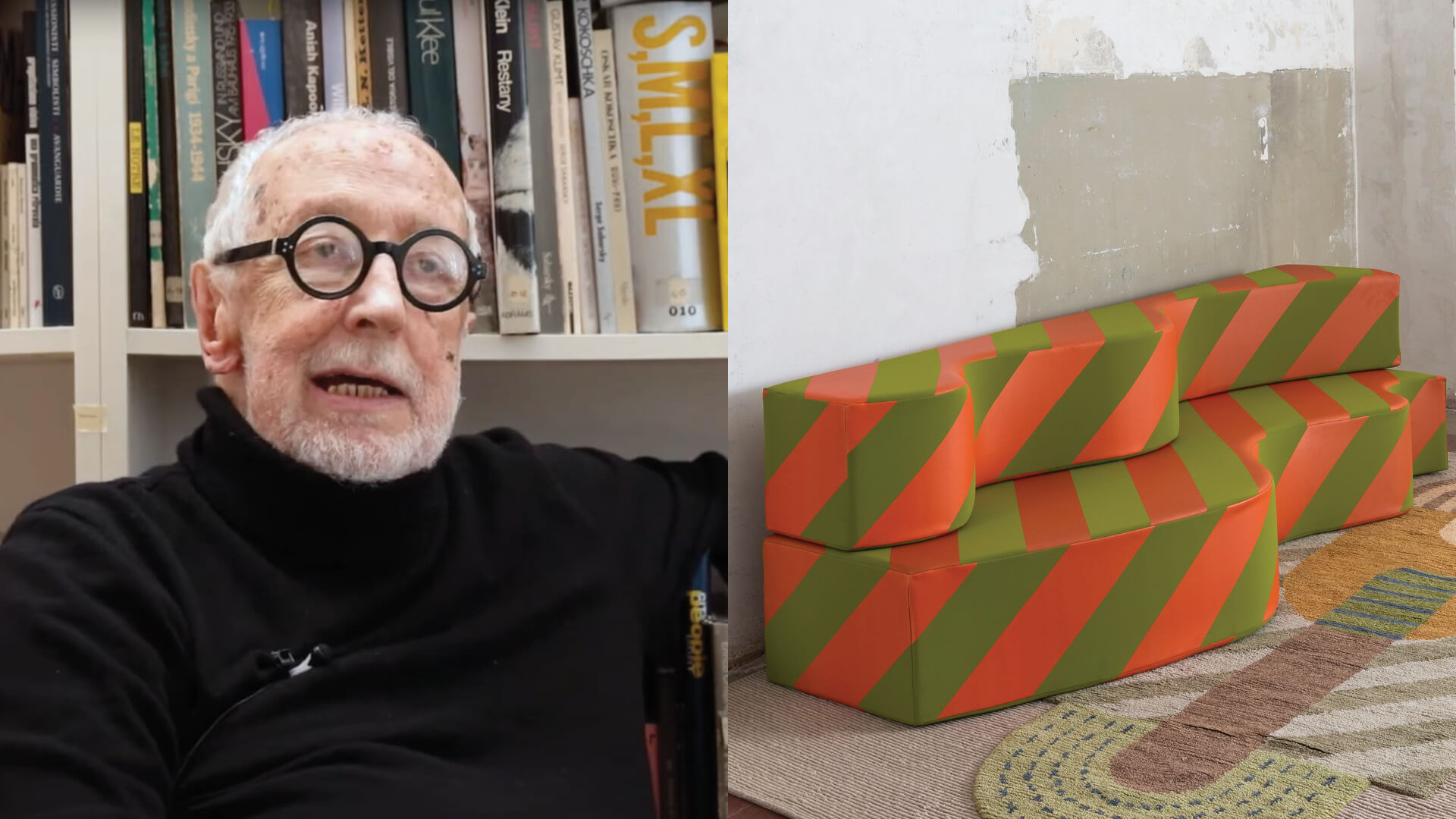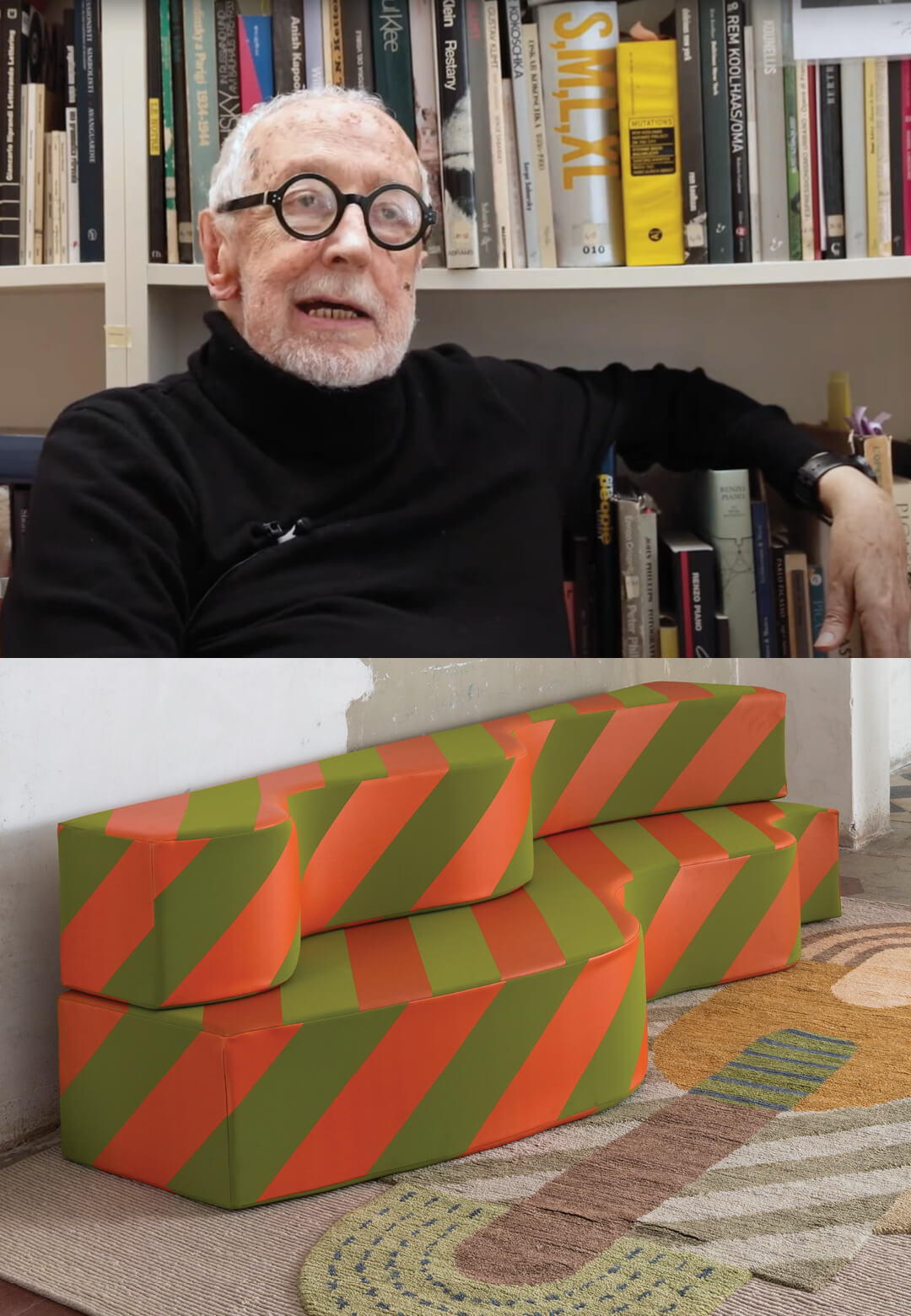Andrea Branzi, architect, academic, and pioneer of radical design ideology in Italy passed away on October 9, 2023. Born and educated in Florence, he is best known for his avant-garde work and founding Archizoom Associati alongside Gilberto Corretti, Paolo Deganello and Massimo Morozzi. He was associated with the group through the 1970s, turning away from postmodern design aesthetics in the 80s to explore a style he called “neoprimitivism”. The revered Italian architect was also the co-founder of Domus Academy, and chairman of the Politecnico di Milano’s School of Interior Design.
No-Stop and Utopianism
Best known for his and his group’s utopian architectural visions, the subversive Archizoom and Branzi have forever left their mark on the history of contemporary design. Branzi advocated for an approach to thinking where how design and our built environments can help us adapt to an ever-changing world is questioned. This is exemplified by Archizoom’s most well-known project, No-Stop City (1969). The design envisions the city of the future as an ever-expanding grid, where the architectural form recedes, and the urban form acts as an instrument of emancipation for the people. Some of Branzi’s other notable furniture designs with the group, rethinking our relationship to material objects include the Superonda Sofa (1966), the Mies Chair (1968), and the modular design for Safari Sofa (1968).
Radical architecture is situated within the more general movement of man’s liberation from culture, […] and tends to reduce all design processes to nought, refusing to play any part in a discipline bent on prefiguring an already coded future through environmental structures. – Andrea Branzi, 1978
A New Metropolitan Life
Veering towards a design sensibility that blended elements of nature and artifice, Branzi’s later work would play on natural materials such as rough-cut tree sections fashioned into minimalist furniture pieces. His journey in design was indicative of his innovative outlook and exploration of furniture and object design to develop his own unique language. As he stated in Domus 633, “Design today is no longer a discipline based on an ‘infallible’ design methodology, as it was believed until the 60s; a discipline, that is, so rational that it could solve any kind of problem. The relationship between man and his objects is rapidly changing.” Branzi argued that “designing today actually means contributing to the design of a new metropolitan life. Today’s city is no longer identified by architecture, but by the market, by the goods that circulate in it.” He was always in search of new and progressive approaches to design.

Accolades
Branzi would regularly collaborate with galleries such as the Friedman Benda and Carpenters Workshop Gallery in order to expand his design research. His works are held in the permanent collections of numerous international institution and museums including the Centre Pompidou, Paris; Museum of Modern Art, New York, and Victoria & Albert Museum, London among others. He was a three-time recipient of the Compasso d’Oro, an award recognising exceptional industrial design in Italy. He was named an Honorary Royal Designer in the United Kingdom in 2008 and received the prestigious prestigious Rolf Schock Prize in Visual Arts by the Swedish Royal Academy of Fine Arts. On the loss of the legendary designer, contemporary Italian architect, Stefano Boeri wrote, “He was a giant of radical thought on human spaces, a sophisticated historian of Italian design, a visionary artist capable of ironically inhabiting other universes and parallel worlds…He left us thinking and dreaming. Ciao Andrea, keep dreaming about us.”

 STIRpad.com
STIRpad.com
























 surprise me!
surprise me!









 Sign in with email
Sign in with email
What do you think?